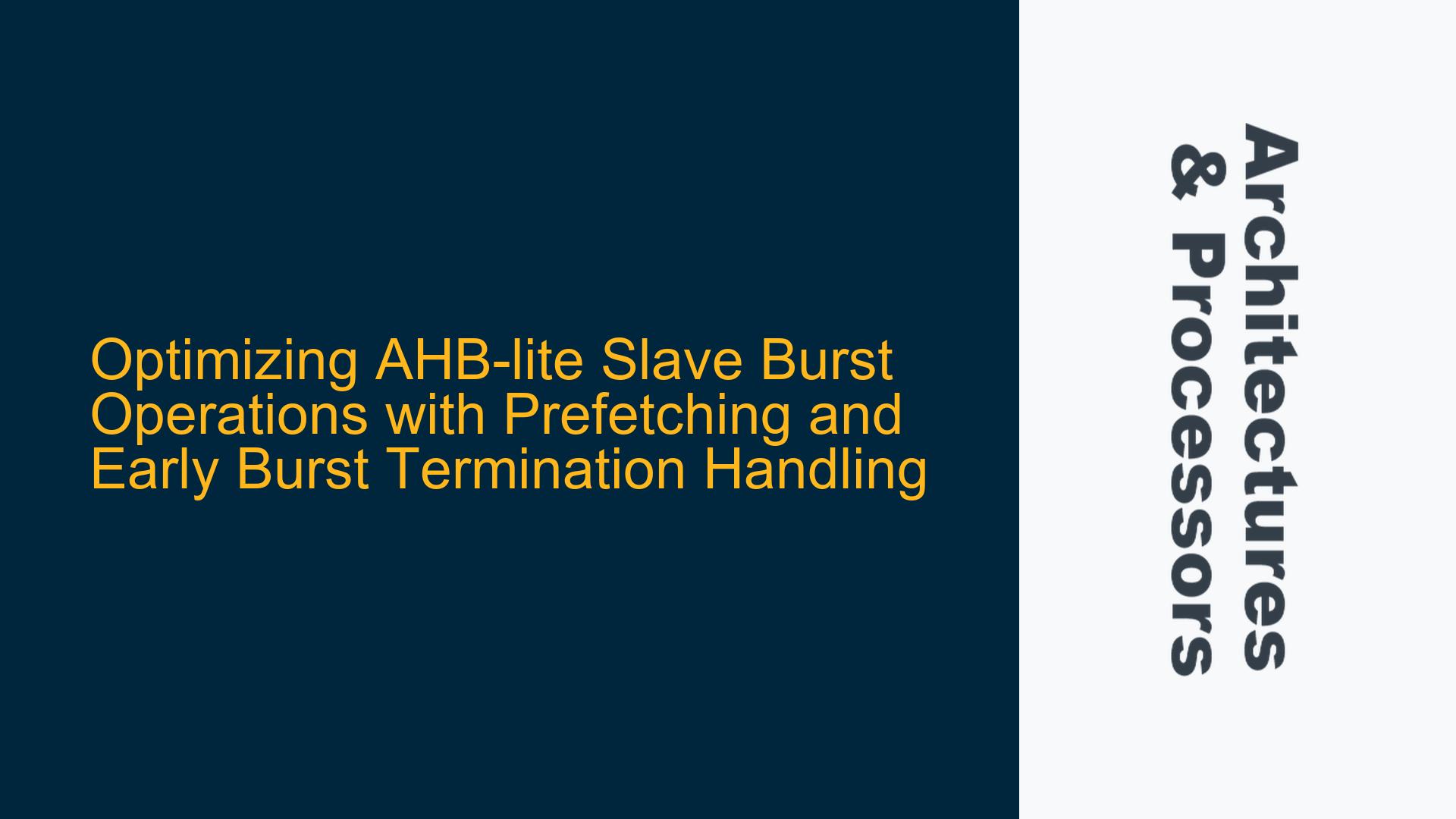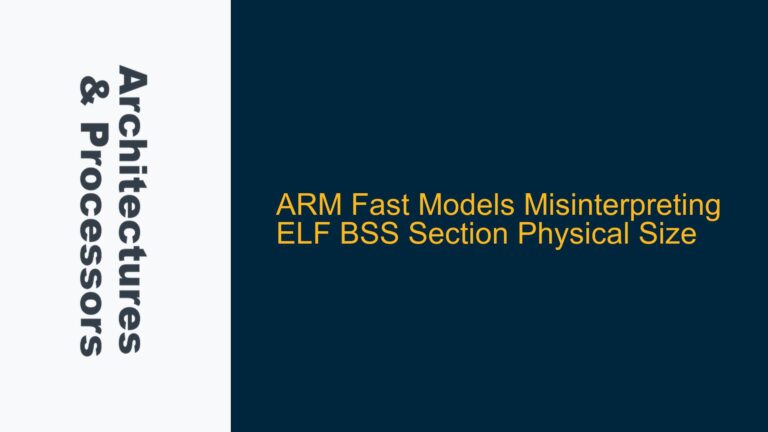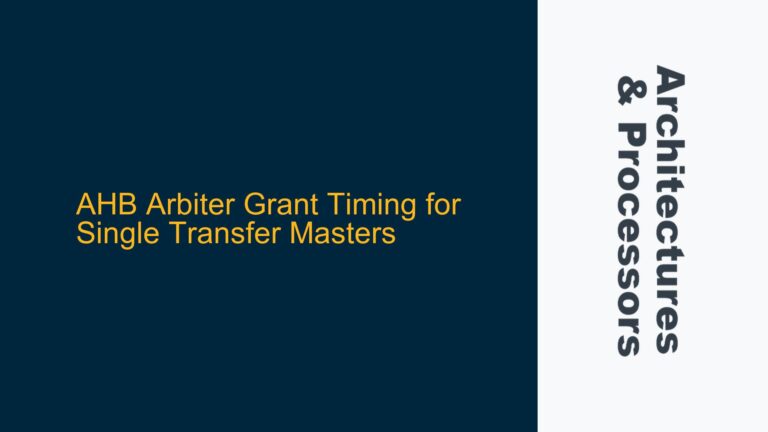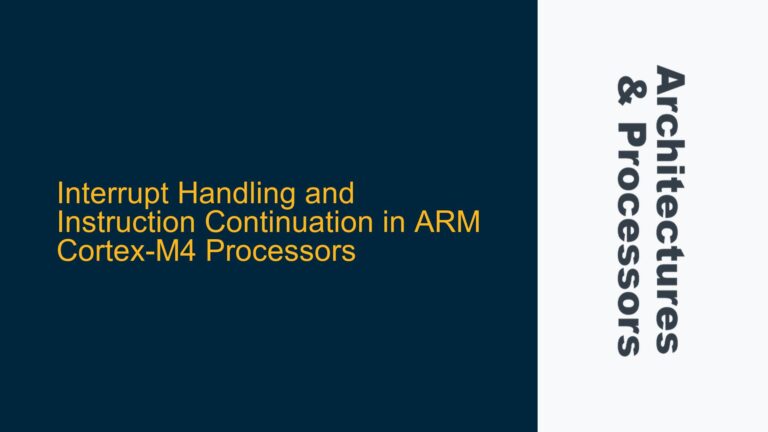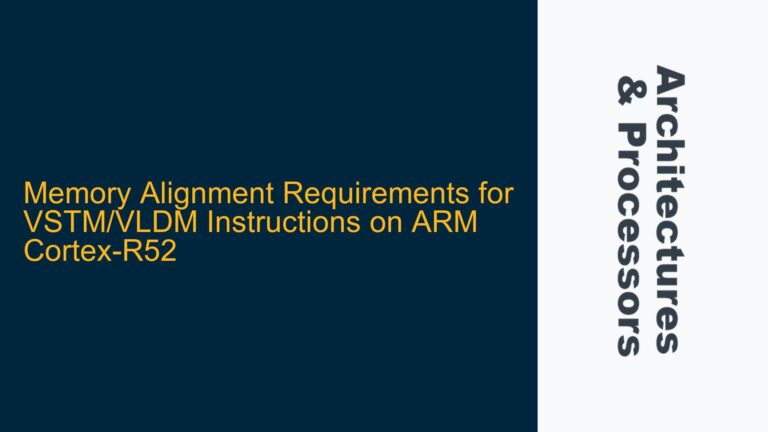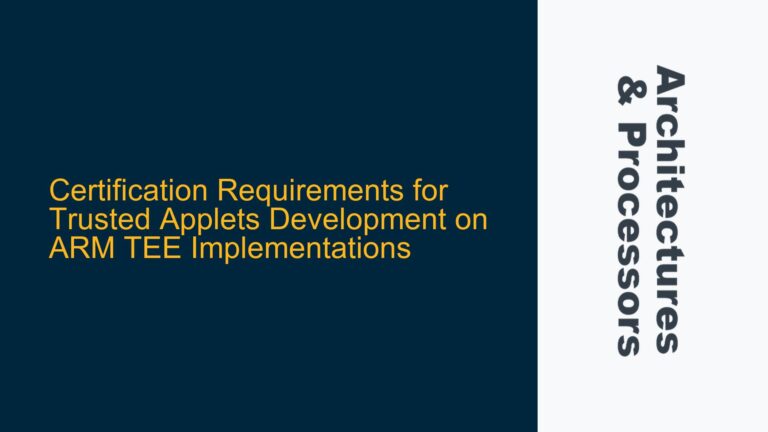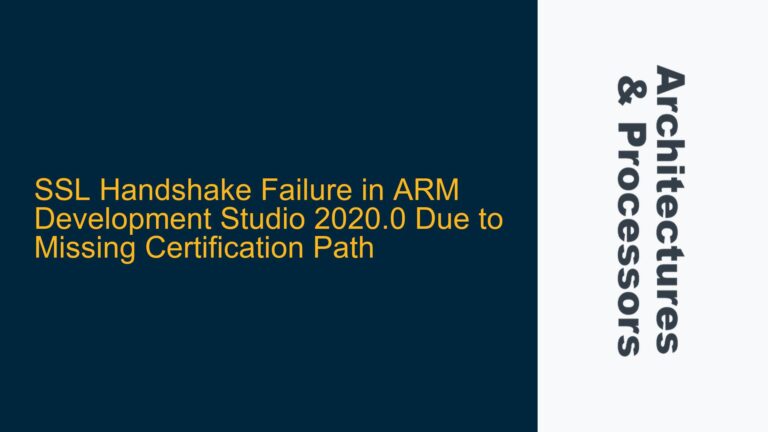AHB-lite Slave Prefetching Strategy and Throughput Optimization
In the context of ARM AMBA AHB-lite systems, optimizing the throughput of an AHB-lite slave involves leveraging burst transactions such as INCR4, INCR8, and INCR16. The goal is to maximize data transfer efficiency by prefetching data based on locally generated addresses rather than relying solely on the HADDR signal from the bus. This approach is particularly useful when the slave operates at half the bus speed but has double the read width, enabling the slave to align data outputs without additional wait states.
The prefetching strategy involves sampling the initial HADDR during the non-sequential (NONSEQ) or burst address phase, inserting an initial wait state, and then generating subsequent addresses internally. This allows the slave to align the data output such that all subsequent data transfers are aligned without requiring additional wait states. However, this approach raises critical questions about the safety and validity of the prefetching mechanism, especially in scenarios involving early burst termination or multiple masters accessing the slave.
The primary concern is ensuring that the slave’s response remains valid and aligned with the master’s transactions. This requires careful monitoring of the HTRANS signal, which indicates the type of transfer being performed (IDLE, BUSY, NONSEQ, or SEQ). Additionally, the slave must handle potential early burst termination scenarios, where the master may not complete the expected number of burst transfers due to arbitration or other system-level factors.
HTRANS Signal Monitoring and Early Burst Termination Risks
The HTRANS signal plays a crucial role in ensuring the validity of the prefetching strategy. During a burst transaction, the HTRANS signal should follow a specific sequence: NONSEQ for the first transfer, followed by SEQ for subsequent transfers in the burst. BUSY cycles may be inserted between NONSEQ and SEQ transfers to stall the burst progression temporarily. However, unexpected IDLE or NONSEQ transfers during a burst indicate early burst termination, which must be handled appropriately.
Early burst termination can occur due to arbitration logic in a multi-master system, where the bus matrix may switch access to another master before the current burst completes. For example, an INCR8 burst may terminate after only five transfers if the arbiter grants access to a different master. In such cases, the slave must discard any prefetched data that is no longer needed and prepare for the new master’s transaction.
The AHB-lite specification (Section 3.5.1) states that defined-length bursts (INCR4, INCR8, INCR16) must terminate with a SEQ transfer and cannot end with a BUSY transfer. However, early burst termination can result in the burst ending on a BUSY or NONSEQ transfer, depending on the master’s behavior and arbitration decisions. This creates a challenge for the slave, which must detect early termination and adjust its prefetching logic accordingly.
For undefined-length bursts (INCR), the situation is different. Since these bursts have no predefined length, they can terminate at any time, and the slave must be prepared to handle termination on any transfer. This requires continuous monitoring of the HTRANS signal to detect NONSEQ or IDLE transfers, which indicate the end of the burst.
Implementing Robust Prefetching with HTRANS and HREADY Signal Validation
To implement a robust prefetching mechanism, the slave must validate the HTRANS and HREADY signals at every cycle, particularly when HREADY is high. This ensures that the prefetched data remains aligned with the master’s transactions and that any early burst termination is detected promptly.
The following steps outline a comprehensive approach to implementing and verifying the prefetching strategy:
-
HTRANS Signal Validation: The slave must sample the HTRANS signal on every rising edge of HCLK when HREADY is high. This ensures that the slave can detect BUSY cycles, early burst termination, and unexpected IDLE or NONSEQ transfers. For defined-length bursts, the slave should expect a sequence of NONSEQ followed by SEQ transfers, with optional BUSY cycles in between. Any deviation from this sequence indicates early burst termination.
-
Prefetch Buffer Management: The slave should maintain a prefetch buffer to store data for upcoming burst transfers. When early burst termination is detected, the slave must discard any unused prefetched data and clear the buffer to prepare for the next transaction. This is particularly important in multi-master systems, where the buffer may be needed for a different master’s transaction.
-
Address Generation and Alignment: The slave should generate subsequent addresses internally based on the initial HADDR sampled during the NONSEQ phase. These addresses must be aligned with the burst length and the slave’s data width. For example, if the slave has double the read width of the bus, the generated addresses should account for this difference to ensure proper data alignment.
-
Handling BUSY Cycles: BUSY cycles temporarily stall the burst progression but do not terminate the burst. The slave must account for these cycles by delaying the output of prefetched data until the BUSY cycle completes. This ensures that the data remains synchronized with the master’s expected transfer sequence.
-
Early Burst Termination Detection: The slave must detect early burst termination by monitoring the HTRANS signal for unexpected IDLE or NONSEQ transfers. When early termination is detected, the slave should discard any unused prefetched data and reset its internal state to handle the next transaction. This is critical for maintaining data integrity and avoiding buffer overflow.
-
Verification and Corner Case Testing: The prefetching mechanism should be thoroughly verified using simulation environments that model multi-master systems and early burst termination scenarios. Corner cases, such as back-to-back bursts with different lengths or arbitration switching during a burst, should be tested to ensure the slave’s robustness.
By following these steps, the slave can achieve optimal throughput while maintaining compliance with the AHB-lite protocol. The key is to balance the benefits of prefetching with the need to handle early burst termination and multi-master arbitration gracefully.
Practical Considerations for AHB-lite Slave Design
In addition to the technical implementation, several practical considerations must be addressed to ensure the success of the prefetching strategy:
-
Clock Domain Crossing: If the slave operates at a different clock speed than the bus, proper clock domain crossing techniques must be employed to synchronize signals such as HTRANS and HREADY. This prevents metastability and ensures reliable signal sampling.
-
Power Domain Management: The prefetch buffer and address generation logic may consume significant power, especially in high-throughput systems. Power domain partitioning and clock gating techniques can be used to minimize power consumption during idle periods.
-
Debugging and Traceability: Implementing traceability features, such as logging HTRANS and HADDR values during simulation, can aid in debugging and verifying the prefetching mechanism. This is particularly useful for identifying issues related to early burst termination or signal misalignment.
-
Synthesis Constraints: The prefetching logic must be synthesized with appropriate timing constraints to ensure that it meets the system’s performance requirements. This includes constraints for address generation, buffer management, and signal validation.
-
System-Level Simulation: The slave should be integrated into a system-level simulation environment that models the behavior of multiple masters, arbitration logic, and other system components. This provides a realistic testbed for verifying the prefetching mechanism under various operating conditions.
By addressing these considerations, designers can ensure that the AHB-lite slave operates efficiently and reliably in complex SoC environments. The combination of robust prefetching logic, careful signal validation, and thorough verification enables the slave to achieve high throughput while maintaining protocol compliance and system stability.
Conclusion
Optimizing AHB-lite slave throughput through prefetching and address generation is a powerful technique for improving system performance. However, it requires careful attention to the HTRANS signal, early burst termination scenarios, and multi-master arbitration. By implementing a robust prefetching mechanism and validating it through comprehensive simulation and testing, designers can achieve significant performance gains while ensuring compliance with the AHB-lite protocol. The key is to balance the benefits of prefetching with the need to handle complex system-level interactions gracefully.
